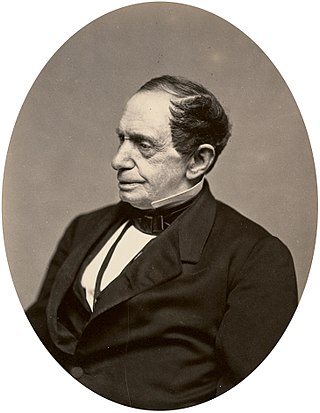
Johns Hopkins was an American merchant, investor, and philanthropist. Born on a plantation, he left his home to start a career at the age of 17, and settled in Baltimore, Maryland, where he remained for most of his life.
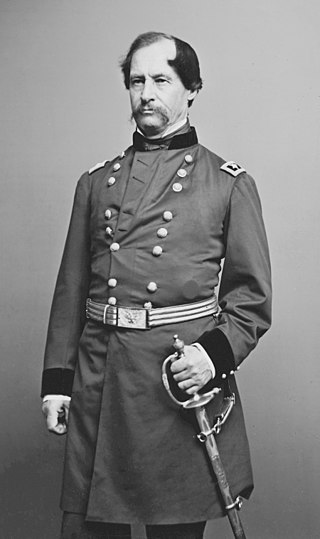
David Hunter was an American military officer. He served as a Union general during the American Civil War. He achieved notability for his unauthorized 1862 order emancipating slaves in three Southern states, for his leadership of United States troops during the Valley Campaigns of 1864, and as the president of the military commission trying the conspirators involved with the assassination of U.S. President Abraham Lincoln.

During the American Civil War, the United States was referred to as simply the Union, also known colloquially as the North, after eleven Southern slave states seceded to form the Confederate States of America (CSA), which was called the Confederacy, also known as the South. The name the "Union" arose from the declared goal of the United States, led by President Abraham Lincoln, of preserving the United States as a constitutional federal union.

William Dennison Jr. was a Whig and Republican politician from Ohio. He served as the 24th governor of Ohio and as U.S. Postmaster General in the Cabinet of President Abraham Lincoln during the American Civil War.
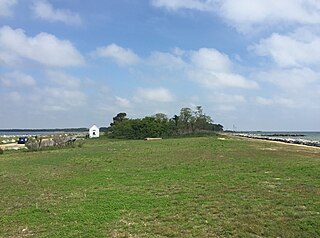
Point Lookout State Park is a public recreation area and historic preserve occupying Point Lookout, the southernmost tip of a peninsula formed by the confluence of Chesapeake Bay and the Potomac River in St. Mary's County, Maryland. The state park preserves the site of an American Civil War prisoner of war camp and the Point Lookout Light, which was built in 1830. It is the southernmost spot on Maryland's western shore, the coastal region on the western side of the Chesapeake Bay.
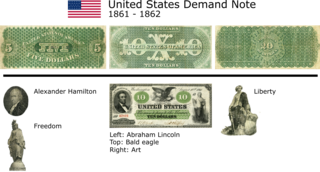
A Demand Note is a type of United States paper money that was issued from August 1861 to April 1862 during the American Civil War in denominations of 5, 10, and 20 US$. Demand Notes were the first issue of paper money by the United States that achieved wide circulation. The U.S. government placed Demand Notes into circulation by using them to pay expenses incurred during the Civil War including the salaries of its workers and military personnel.

James Chesnut Jr. was an American lawyer and politician, and a Confederate functionary.

Satterlee General Hospital was the largest Union Army hospital during the American Civil War. Operating from 1862 to 1865 in Philadelphia, Pennsylvania, its physicians and nurses rendered care to thousands of Union soldiers and Confederate prisoners. After its patient population spiked following the battles of Bull Run and Gettysburg, this hospital became the second-largest in the country with 34 wards and hundreds of tents containing 4,500 beds.
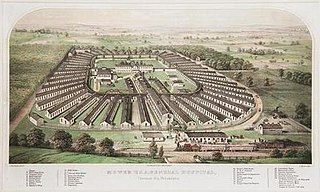
Mower General Hospital was one of the largest Federal military hospitals during the American Civil War. Located across from the Reading Railroad depot in the Chestnut Hill section of Philadelphia, it operated from January 1863 through May 1865, and was closed with the cessation of the war.

During the American Civil War (1861–1865), Maryland, a slave state, was one of the border states, straddling the South and North. Despite some popular support for the cause of the Confederate States of America, Maryland did not secede during the Civil War. Governor Thomas H. Hicks, despite his early sympathies for the South, helped prevent the state from seceding.

The Commonwealth of Massachusetts played a significant role in national events prior to and during the American Civil War (1861–1865). Massachusetts dominated the early antislavery movement during the 1830s, motivating activists across the nation. This, in turn, increased sectionalism in the North and South, one of the factors that led to the war. Politicians from Massachusetts, echoing the views of social activists, further increased national tensions. The state was dominated by the Republican Party and was also home to many Radical Republican leaders who promoted harsh treatment of slave owners and, later, the former civilian leaders of the Confederate States of America and the military officers in the Confederate States Army.

During the American Civil War (1861–1865), Washington, D.C., the capital city of the United States, was the center of the Union war effort, which rapidly turned it from a small city into a major capital with full civic infrastructure and strong defenses.
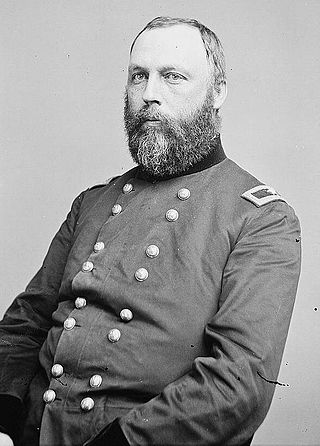
William Alexander Hammond was an American military physician and neurologist. During the American Civil War he was the eleventh Surgeon General of the United States Army (1862–1864) and the founder of the Army Medical Museum.
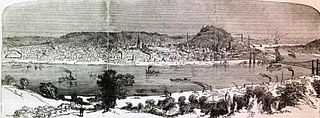
During the American Civil War, the Ohio River port city of Cincinnati, Ohio, played a key role as a major source of supplies and troops for the Union Army. It also served as the headquarters for much of the war for the Department of the Ohio, which was charged with the defense of the region, as well as directing the army's offensives into Kentucky and Tennessee.

Joseph K. Barnes was an American physician and the 12th Surgeon General of the United States Army (1864–1882).

The state of medical knowledge at the time of the Civil War was extremely primitive. Doctors did not understand infection, and did little to prevent it. It was a time before antiseptics, and a time when there was no attempt to maintain sterility during surgery. No antibiotics were available, and minor wounds could easily become infected, and hence fatal. While the typical soldier was at risk of being hit by rifle or artillery fire, he faced an even greater risk of dying from disease.
The Sunday Mercury (1839–1896) was a weekly Sunday newspaper published in New York City that grew to become the highest-circulation weekly newspaper in the United States at its peak. It was known for publishing and popularizing the work of many notable 19th-century writers, including Charles Farrar Browne and Robert Henry Newell, and was the first Eastern paper to publish Mark Twain. It was also the first newspaper to provide regular coverage of baseball, and was popular for the extensive war correspondence from soldiers it published during the Civil War.

The Commemoration of the American Civil War on postage stamps concerns both the actual stamps and covers used during the American Civil War, and the later postage celebrations. The latter include commemorative stamp issues devoted to the actual events and personalities of the war, as well as definitive issues depicting many noteworthy individuals who participated in the era's crucial developments.

Elida B. Rumsey, also referred to by her married name, Elida Fowle, was a singer, philanthropist, and Union nurse during the American Civil War. Too young to join Dorothea Dix's army nursing service, Rumsey volunteered for three years of the war.

The Armory Square Hospital formally known as the District Armory or Armory of the District of Columbia was a military hospital for the Union Army located on the National Mall in Washington, D.C., which operated from 1862 to 1865. It stood at the intersection of 6th Street SW and B Street SW between the Smithsonian Castle and the Capitol. The 12 wards extended across the Mall, all the way to the Canal. Today, the National Air and Space Museum stands in its place.


















